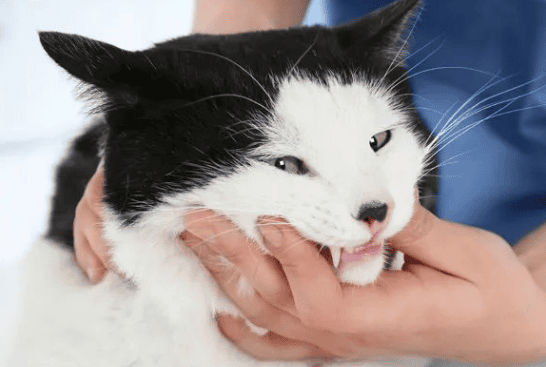Raising a cat is similar to raising a child.
You need to teach the cat a lot of things after you bring it home.
If you raise a cat from a young age,
There are more things to teach~
In order for the "0 experience" raising kittens
to be able to successfully start raising them,
We will bring you 4 issues
"Galaxy Sky Class·Kitten"
Let’s continue to look at the content of issue ④ this time~
Today’s topic
For kittens
Care for the oral cavity carefully
In the health management of kittens,
"Oral care"
is often overlooked by cat owners.
If you don't have the habit of checking the status of your cat's oral cavity,
it will not be discovered. Small oral problems
may inadvertently worsen into serious problems.
Therefore, this time, please follow this article together
Learn how
to take good care of your kitten’s mouth!

(一)
What do the teeth in a cat’s mouth look like?
As shown in the picture below, cats have 4 types of teeth: incisors, canines, premolars, and postmolars. After the deciduous teeth are replaced by permanent teeth, they can have a total of 30 teeth.
, the permanent teeth are basically completely fixed.
As both carnivores, cats have different teeth from humans. Their teeth are all pointed in shape, including molars. They bite together like scissors, which can help cats "cut" "Food, but cannot "grind" food like human back molars (mortar-shaped). Such teeth determine that cats cannot chew food well.
In addition, the environment inside the human oral cavity is acidic, which can breed tooth decay; while the environment inside the oral cavity of cats is alkaline (Ph value 8.0~9.0), so cats basically have no trouble with tooth decay, but they do. It is easy to have "dental calculus". It is said that if tartar is not removed from a cat’s mouth, “tartar” will form in a week. But don’t underestimate your cat’s tartar and calculus. If left unchecked, it may cause periodontal disease and other oral diseases. In severe cases, it may even affect the cat’s eating, so cats also need oral care.
(2)
What symptoms
mean that a cat has oral disease?
After reading the previous content, if you, as a poop scraper, have begun to worry about kitten oral problems, you might as well develop the habit of checking the oral health of cats from now on~
The simplest and most intuitive way is to open the cat's mouth, look at the roots of its teeth, and confirm whether there is tartar, tartar attached, and whether the gums have turned red, etc.
However, some cats may hate this kind of inspection. Here is an "observation list" for you. You can observe whether your cat has these conditions in your daily life.
If your cat appears in these situations,
it may be an "oral disease"!
Halitosis
Takes longer to eat
Seems to be eating with only one tooth
Make strange noises while eating
Hate opening your mouth
Have stopped eating hard food
Hate having your mouth touched
Dool more
Anything put into its mouth will be spit out immediately
Rubbing the ground with its mouth
Wiping the area around its mouth with its front paws
The character becomes violent< /p>
Often spilled when eating
Looks like you have an appetite, but doesn’t eat
Tilting your head to one side when eating
Sneezing, Runny nose
Not grooming yourself
If your kitten has these symptoms, please take the cat to the pet hospital for consultation in time to check whether it has oral diseases.

(三)
The “top priority” for cats’ oral care
is brushing teeth!
Cats have small mouths, and there are salivary gland outlets next to the upper back molars. The calcium and phosphorus in the saliva attach to the tartar and turn into dental calculus. Therefore, cats are particularly susceptible to dental disease around the upper back molars. Periodontal disease.
In addition, cat’s tartar will also accumulate at the junction of tooth roots and gums. Therefore, if you want to clean your cat’s tartar in these subtle areas and prevent it from periodontal disease, brushing its teeth with a toothbrush is the best care method.

 扫一扫微信交流
扫一扫微信交流
发布评论